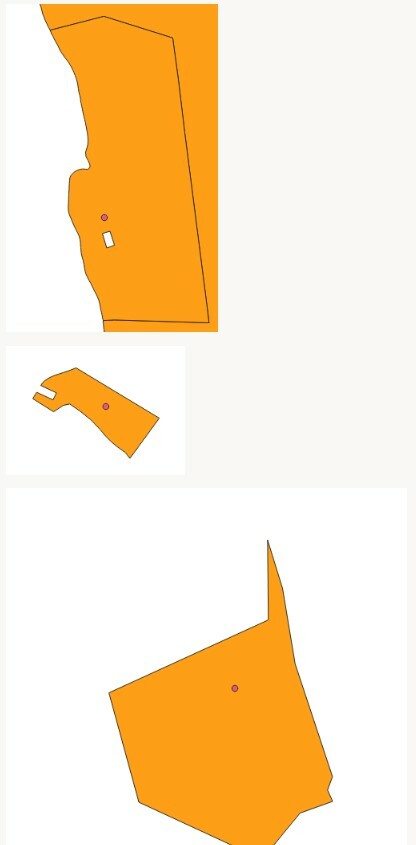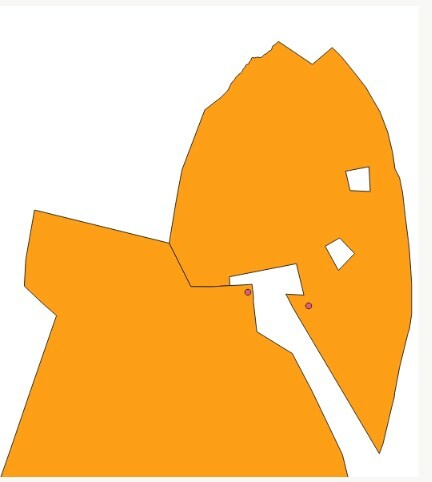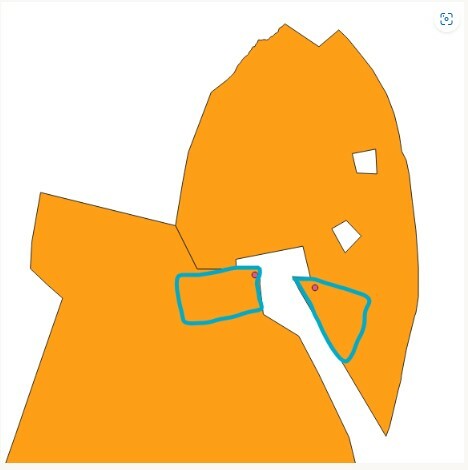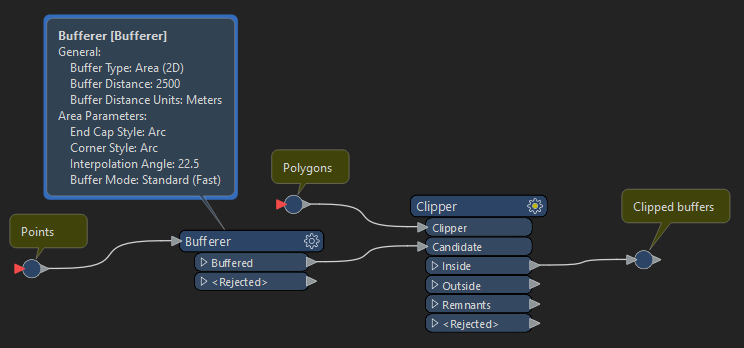I have points contained by polygons. I want to buffer these with a spesific buffer of 2500 square meters. And I want these buffers to not cross or expand outside of the polygon.
I need apply this to a lot of points with a single operation.
The polygons look like this (there are hundreds in the project), and you can see the points inside:

 This is how I want it to look (the shape of the buffer is customized to the polygon):
This is how I want it to look (the shape of the buffer is customized to the polygon):
 I got some help help here previously: Buffer/expand point contained inside another polygon
I got some help help here previously: Buffer/expand point contained inside another polygon
But this method does not work on irregular polygons. It only works on squares.







 EDIT: Just saw where you said square meters as the total area. You would need to calculate the radius of the buffer based on 2500sq meters using A=πr^2. So the number you feed into the buffer would be roughly 28.284m.
EDIT: Just saw where you said square meters as the total area. You would need to calculate the radius of the buffer based on 2500sq meters using A=πr^2. So the number you feed into the buffer would be roughly 28.284m.


